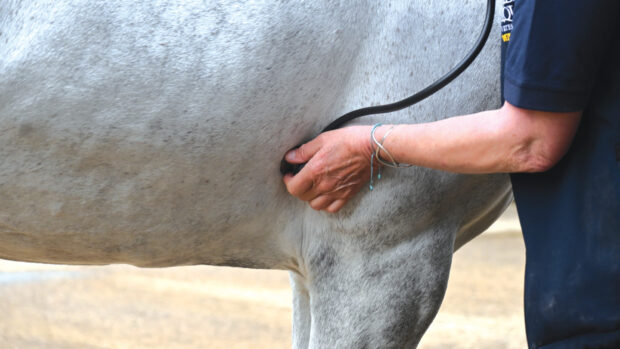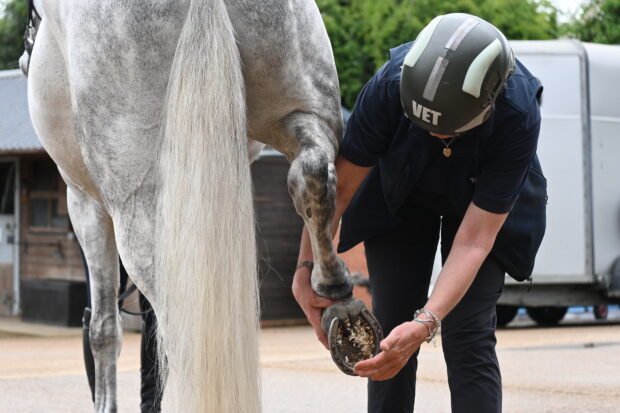A campaign aimed to help protect vets from injury has received a massive flood of support from the equestrian community.
The British Equine Veterinary Association (BEVA) “Don’t Break Your Vet” campaign was launched on 1 February to “help owners make life safer for their horses, themselves and their vets”.
The association created a series of videos featuring vet and equine behaviour specialist Gemma Pearson, who demonstrates techniques for helping keep horse calm in different situations.
These include working with needle-shy equines to help them accept injections, as well as techniques for helping with clipping, leading and trotting up.
The campaign has been seen by more than 200,000 people and the videos have been watched more than 100,000 times.
The videos have attracted more than 35,000 comments, shares and likes on social media.
“I’m thrilled at how much support the campaign received across the equine industry,” David Mountford, BEVA’s chief executive, told H&H.
“We all know that working around horses carries inherent risks but taking simple steps to reduce the chances of human injuries and make veterinary care easier is a no-brainer.
“It seems that the campaign has really raised awareness of the dangers that equine vets face and I hope that the videos continue to provide people with easy to follow techniques to help their horses to be relaxed; I know that they have worked for me.”
A recent paper published in Equine Veterinary Education showed that on average, an equine vet sustains seven to eight work-related injuries in a 30-year career.
Continued below…

Horse owners urged: ‘don’t break your vet’!
Equine vets have a higher risk of being injured at work than firefighters

What is the best way to feed hay? Spillers explains… *Promotion*
Spillers' equine nutritionist Clare Barfoot provides one H&H forum user with some helpful advice on the best way to feed
Bruising, fractures and cuts to the leg or head were the most commonly reported injuries, with the main cause a kick from a hind leg.
Nearly a quarter of the reported injuries led to hospital admission, while 7% resulted in a loss of consciousness.
“Vets should be able to focus on the horse’s injury or illness without worrying about their own, or others’, safety,” added Mr Mountford. “They will be better able to use the right tools and techniques for an accurate diagnosis and treatment if the horse is presented calmly and safely.”




